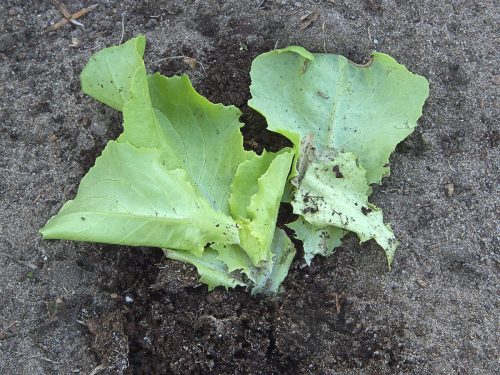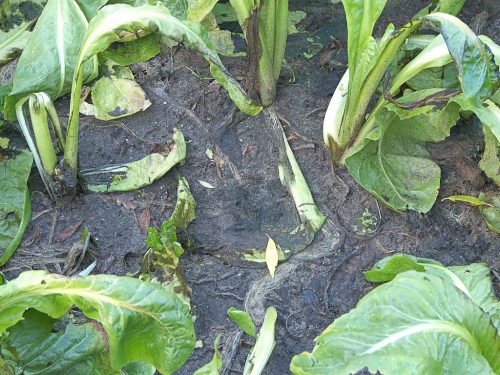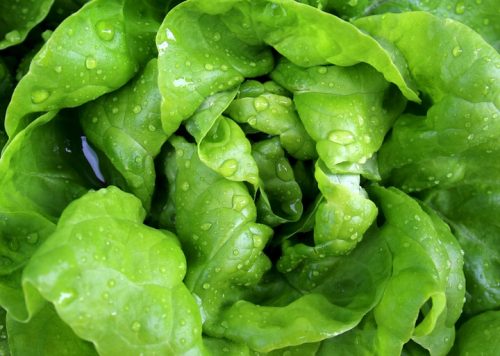There is a suitable variety of lettuce for every season.
You are viewing the mobile-adapted version of the page.
The one for tablets, laptop and desktop also provides general information, such as origin and cultivation.
Lettuce – (Lactuca) produces many leaves and therefore needs a nutritious soil. Water regularly. Once growth stops, lettuce bolts and starts flowering. Food shortage causes premature bolting.
Sow a little lettuce each time, no matter the variety, this way you are guaranteed fresh lettuce for a summer.
If lettuce is sown after the longest day (June 21), it does not bolt.
Butterhead lettuce, including cos (Romaine) lettuce and crisphead (Iceberg) lettuce, forms a fairly loose head. Loose-leaf lettuce produce less dense leaf rosettes, ideal for picking individual leaves and for growing in containers.
Young plants of most lettuce varieties are available at garden centers.
Aphids, slugs and caterpillars also like lettuce; remove them. Lettuce is susceptible to fungi; giving the plants space and a putting them in a not too sheltered place – read: windy place – will prevent fungus. After a rain, the plants dry quickly.
There is a variety of lettuce for every season. Check the packaging for the correct information. Lettuce grows quickly; in summer, lettuce takes an average of eight weeks to be harvested. In autumn, it takes a week or so longer. Lettuce is also an excellent crop on leftover patches, among slow growers (leeks) or under and between beanstalks. Lettuce likes fertile soil and light. If lettuce is left too dark, it forms long, limp leaves.
August is the last month when lettuce can still be sown as a secondary crop.
Bugs

Young lettuce plants are attacked by leatherjackets – larvae of the crane fly.
Leaf is full of aphids.
Feeding on root or stem of young lettuce plant: Wireworm (Agriotes spp.) – larva of click beet
Plant grows poorly, wilts: Cutworm (Agrotis).
Leaf shows slime traces and is eaten: Snails and slugs.
Lettuce lags in growth; on the roots are white-gray aph
Leaf is eaten by caterpillars of the cabbage moth (Mamestra brassicae).
Fungi & diseases
Plant rots away from the underside of the crop: Gray mold (Botry
Leaf shows light spots on top, white fungus on bottom: Downy mildew (Peronosporaceae family).
Outer leaves turn brown after which they rot. Leaf appears adhered to the ground: Lettuce drop (Sclerotinia ssp.).
Bumps develop on the leaves and translucent bands appear along the veins: lettuce big-vein virus (Olpidium brassicae).

Leaf edges turn black: Pseudomonas marginalis.
Other
The heart of the lettuce plant is eaten from the head: common wood pigeons.
‘Glassy’, translucent spots develop at the edges of the leaves and sometimes in the heart of the lettuce plant. The lettuce plant absorbs more water than evaporates, causing the cell walls to burst: glassiness.
Leaf edges turn brown: calcium deficiency.

